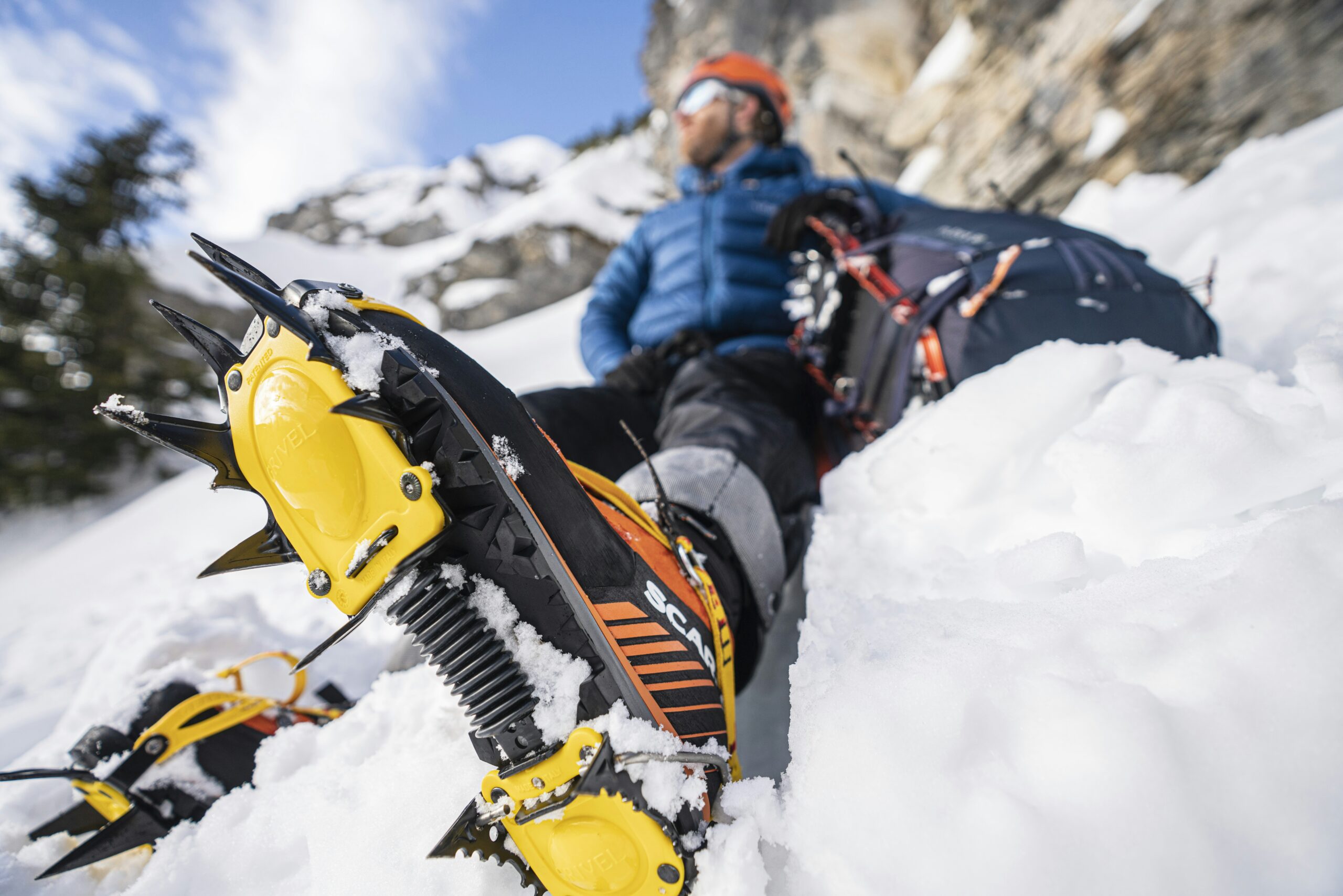Mount Shasta, the majestic peak nestled in Northern California, has long been a source of fascination for outdoor enthusiasts and adventurers alike. With its breathtaking vistas and challenging terrain, it's no wonder that many dare to conquer its summit. However, amidst the allure and thrill, a question lingers in the back of your mind: have there been any fatalities on Mount Shasta caused by equipment failure? This article aims to shed light on this unsettling inquiry and provide insight into the measures taken to ensure the safety of those who dare to undertake this formidable journey.

Overview of Mount Shasta Climbing Risks
Mount Shasta, the iconic and majestic peak located in Northern California, attracts countless adventurous climbers each year. However, climbing any mountain comes with inherent risks and challenges. In this comprehensive article, we will assess the dangers associated with mountain climbing in general and specifically focus on Mount Shasta and its unique set of challenges.
Assessing the Inherent Dangers of Mountain Climbing
Mountain climbing, an exhilarating and physically demanding activity, involves numerous risks that climbers must be aware of. These risks encompass a wide range of factors, including unpredictable weather conditions, steep and technical terrain, altitude sickness, and potential falls. It is crucial for climbers to understand these dangers and take the necessary precautions to ensure their safety.
Specifically Focusing on Mount Shasta and Its Unique Challenges
Mount Shasta, a dormant stratovolcano standing at an impressive 14,179 feet, presents climbers with a set of unique challenges. The mountain's unpredictable weather patterns, including sudden storms and strong winds, pose considerable risks. Furthermore, the high altitude and freezing temperatures demand climbers to be physically and mentally prepared. With its treacherous glaciers, icy slopes, and crevasses, Mount Shasta requires climbers to have specialized mountaineering skills and proper equipment.
Presenting Historical Data on Accidents and Fatalities on Mount Shasta
In order to quantify the risks associated with climbing Mount Shasta, it is important to examine the historical data on accidents and fatalities that have occurred on the mountain. While the overall number of incidents is relatively low compared to the number of climbers who attempt the summit each year, the consequences can be severe. Understanding the causes of these incidents will help climbers make informed decisions and take appropriate precautions.
Analyzing the Major Causes of Mount Shasta Incidents
An analysis of the major causes of accidents and fatalities on Mount Shasta reveals several recurring factors. Unfavorable weather conditions, including high winds and whiteouts, have led to many incidents. Inadequate preparation, such as not carrying essential gear or underestimating the challenges, has also played a significant role. Additionally, human error, including judgment errors and lack of experience, has often contributed to accidents on the mountain.
Highlighting Essential Mountaineering Tools and Gear
Proper equipment is essential for safe mountain climbing, including a climb on Mount Shasta. There are several key tools and gear that climbers should always have on hand. These include appropriate footwear for the icy terrain, crampons for secure footing on the glaciers, an ice axe for self-arrest in case of a fall, and a helmet for protection from falling debris. It is important to recognize the significance of these items and their role in ensuring climbers' safety.
Discussing the Functions and Effects of Proper Equipment Use
Using the right equipment in the correct manner significantly enhances climbers' safety and minimizes the risks associated with mountaineering. Properly fitted and maintained gear provides stability, protection, and stability during treacherous climbs. It allows climbers to navigate technical terrain with confidence and mitigates the consequences of slips and falls.
Recalling Specific Incidents of Equipment Failure on the Mountain
While proper equipment use is paramount, incidents of equipment failure can occur, even on Mount Shasta. Several notable cases stand as reminders of the potential risks. Instances of crampon malfunction, rope failure, and ice axe breakage have been reported. These incidents highlight the importance of selecting reliable gear and conducting periodic equipment checks.

Identifying the Types of Equipment Involved in These Failures
Equipment failures on Mount Shasta span across a range of gear types. Crampons, the traction devices attached to boots for secure footing on ice, have been known to loosen or dislodge during climbs. Rope failure incidents have involved both dynamic and static ropes. Ice axes have occasionally broken or become damaged while in use. By identifying these types of equipment involved in failures, climbers can prioritize their attention to ensure proper maintenance and reliability.
Investigating Fatality Cases Specifically Involving Equipment Failure
Tragically, there have been fatalities on Mount Shasta directly linked to equipment failures. Investigating these cases provides valuable insights into the consequences of equipment malfunction. Reports and stories of deaths resulting from rope failures, crampon accidents, and other equipment-related incidents contribute to our understanding of the potential risks climbers face.
Verifying Reports and Stories of Deaths Due to Equipment Problems
Verifying reports and stories of deaths resulting from equipment failure is crucial in order to accurately assess the risks climbers encounter. By cross-referencing eyewitness accounts, official reports, and expert analysis, we can gain a clearer understanding of the role equipment problems play in tragic climbing incidents. This verification process helps establish a foundation for addressing these risks effectively.
Detailing How Neglect and Improper Gear Maintenance Leads to Failures
Proper maintenance of climbing gear is essential to ensure safe and successful climbs. Neglecting equipment maintenance or failing to follow manufacturer guidelines can lead to gear failures on the mountain. Ropes can become worn or damaged over time, crampons can rust or lose their effectiveness, and ice axes can develop cracks. Understanding how neglect and improper gear maintenance contribute to failures is crucial in preventing incidents.

Highlighting Known Incidents Where Poor Maintenance Was a Factor
There have been incidents on Mount Shasta where poor equipment maintenance directly contributed to failures. Cases involving frayed ropes, rusty crampons, and ice axes with loose heads serve as stark reminders of the importance of routine checks and proper care of gear. These incidents highlight the need for climbers to be diligent in maintaining their equipment and promptly addressing any signs of damage or wear.
Contrasting Deaths from Errors in Judgement or Skill Versus Those from Faulty Gear
Understanding whether equipment failure or human error is more dangerous when it comes to mountaineering deaths is a critical factor in assessing risks. While both play significant roles, contrasting deaths resulting from errors in judgment or skill against those caused by faulty gear can provide valuable insights. This analysis allows climbers to focus on the areas that need improvement in order to enhance safety.
Analyzing Whether Equipment Failure or Human Error Is More Dangerous
Analyzing whether equipment failure or human error poses a greater threat to climbers' safety requires a comprehensive evaluation of incidents and their consequences. While equipment failure can have immediate and drastic impacts, human error can also lead to fatal outcomes. It is crucial to address both factors effectively in order to minimize risks and enhance climbers' safety on Mount Shasta.
Emphasizing the Need for Proper Gear Checks Before Climbing
Proper gear checks are essential before embarking on a climb, regardless of the mountain. However, Mount Shasta's unique challenges make this step even more crucial. Checking the integrity and functionality of equipment, including ropes, crampons, ice axes, and harnesses, can significantly reduce the risk of equipment-related incidents. It is vital for climbers to allow adequate time for thorough checks and address any concerns before starting their ascent.
Explaining Established Safety Procedures and Why They Need to Be Followed
Established safety procedures have been developed by experts and experienced climbers to mitigate risks and ensure climbers' safety. These procedures encompass a range of aspects, including proper use of equipment, communication techniques, and strategies for dealing with adverse weather conditions. It is imperative for climbers to adhere to these protocols to minimize the likelihood of accidents and fatalities.
Recommending Measures to Maintain and Inspect Gear Properly
To minimize the risks associated with equipment failure, climbers should adopt measures to maintain and inspect their gear regularly. This includes following manufacturer instructions for care and storage, conducting routine inspections for signs of wear or damage, and addressing any issues promptly. By integrating these practices into their climbing routine, climbers can enhance their safety and reduce the likelihood of equipment-related incidents.
Offering Prevention Tips to Limit Chances of Equipment Malfunction
In addition to regular gear maintenance, climbers can take proactive steps to minimize the chances of equipment malfunction during their Mount Shasta ascent. Choosing top-quality gear from reputable manufacturers, investing in proper training and education, and staying updated on the latest advancements in climbing equipment are all effective prevention strategies. By being proactive and diligent, climbers can reduce the likelihood of equipment-related incidents and enhance their overall climbing experience.
Predicting How Advancements in Climbing Equipment Will Impact Safety
As technology advances, climbers can anticipate improvements in climbing gear that could revolutionize safety standards. Innovations in materials, design, and manufacturing techniques have the potential to enhance the reliability, durability, and performance of climbing equipment. By predicting these advancements, climbers can prepare to embrace safer practices and stay informed about the potential benefits and applications of new gear.
Anticipating Whether These Improvements Could Minimize Deaths from Equipment Failure
With advancements in climbing equipment, it is reasonable to anticipate a reduction in deaths resulting from equipment failure. Stronger and more robust ropes, durable and reliable crampons, and safer ice axes can significantly minimize the risks climbers face. By embracing these improvements and incorporating them into climbing practices, climbers can look forward to a future where equipment failure becomes a much less prevalent cause of fatalities.
In conclusion, climbing Mount Shasta, like any mountain, entails inherent risks. Understanding the dangers associated with mountain climbing and how they specifically manifest on Mount Shasta is crucial for climbers seeking to ensure their safety. By analyzing historical data, equipment failures, and the role of human error, climbers can take proactive measures to minimize risks and enhance their overall climbing experience. Through proper gear checks, maintenance, adherence to safety procedures, and anticipatory measures for future advancements, climbers can confidently embark on their journey to conquer Mount Shasta.
